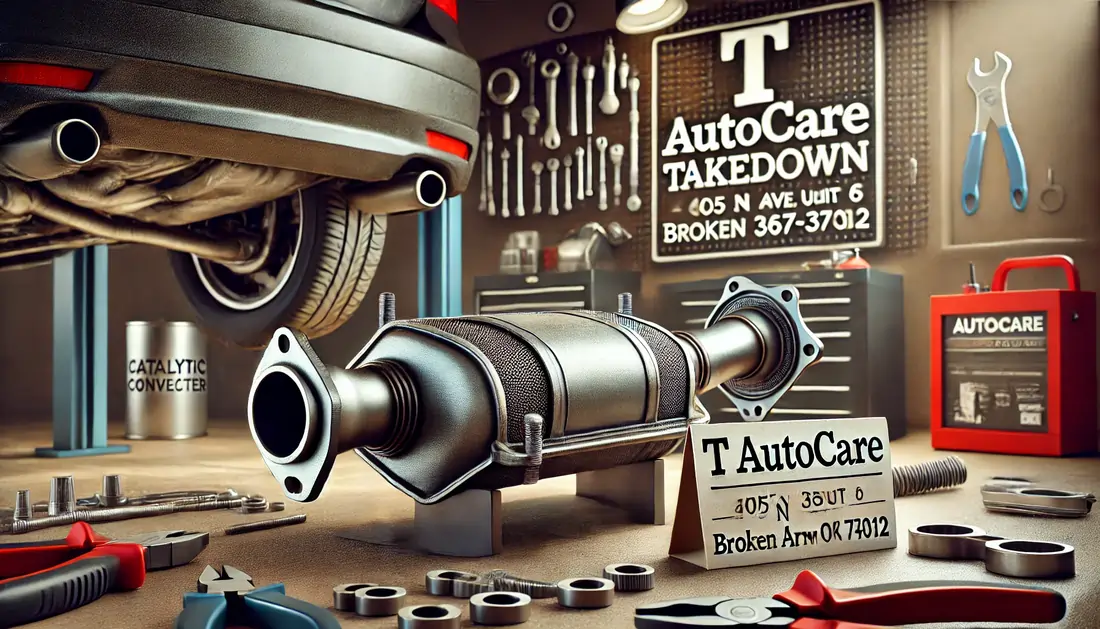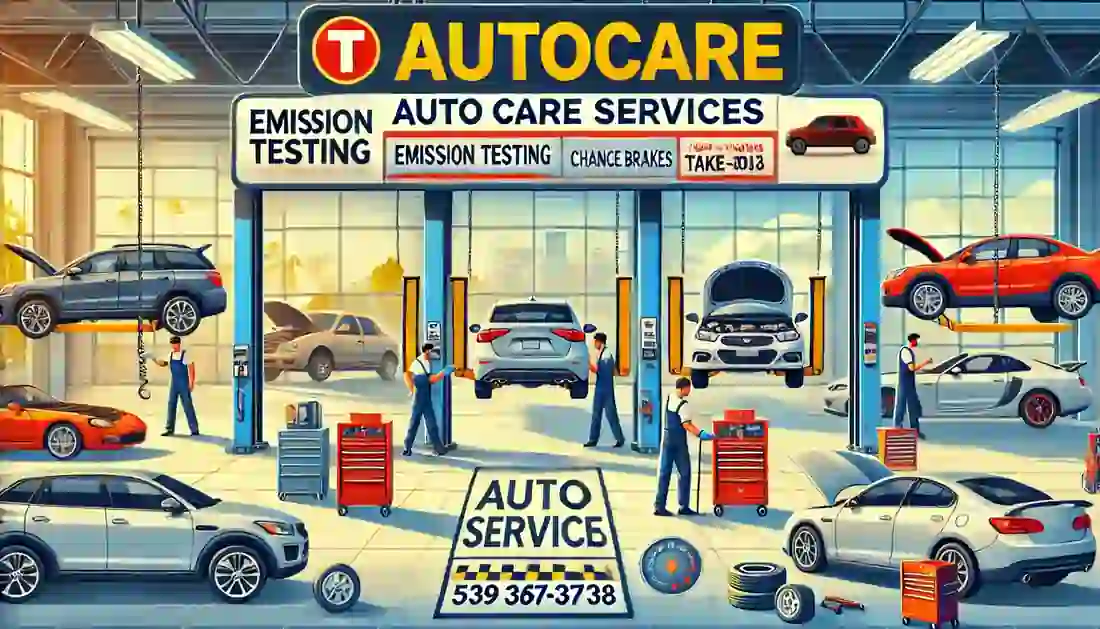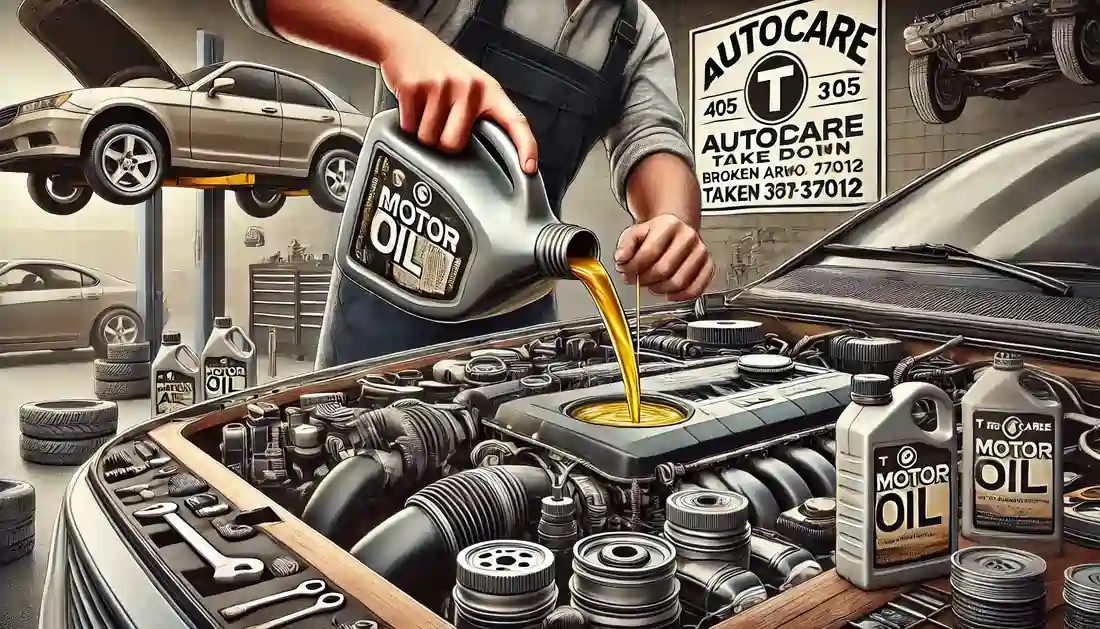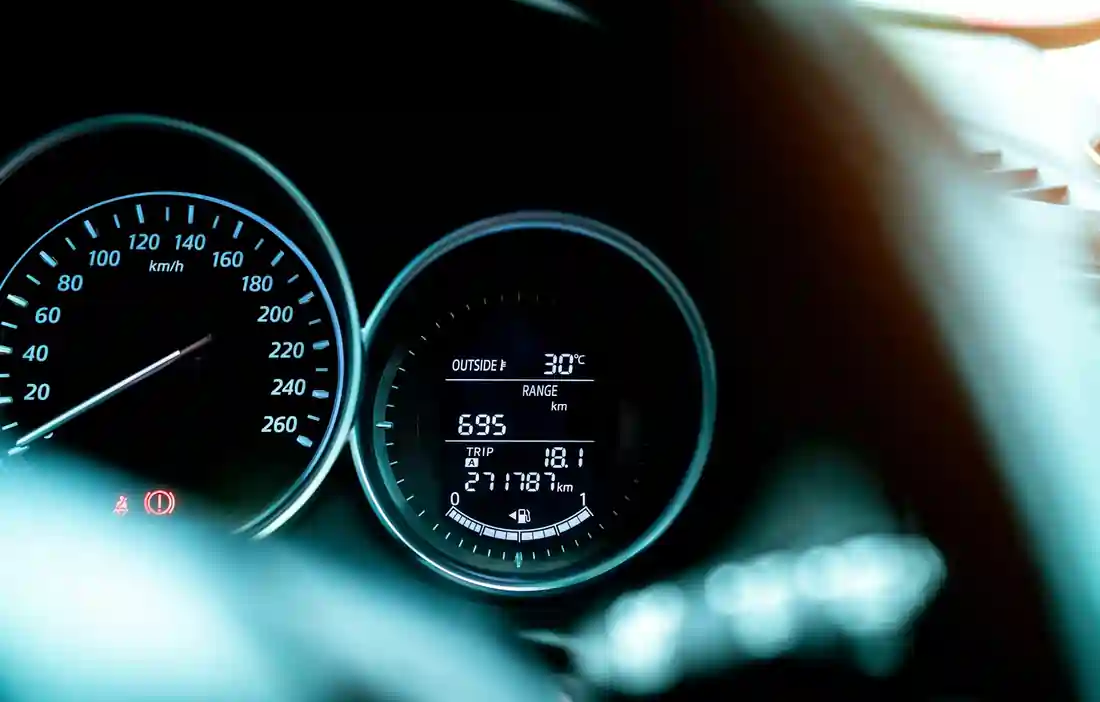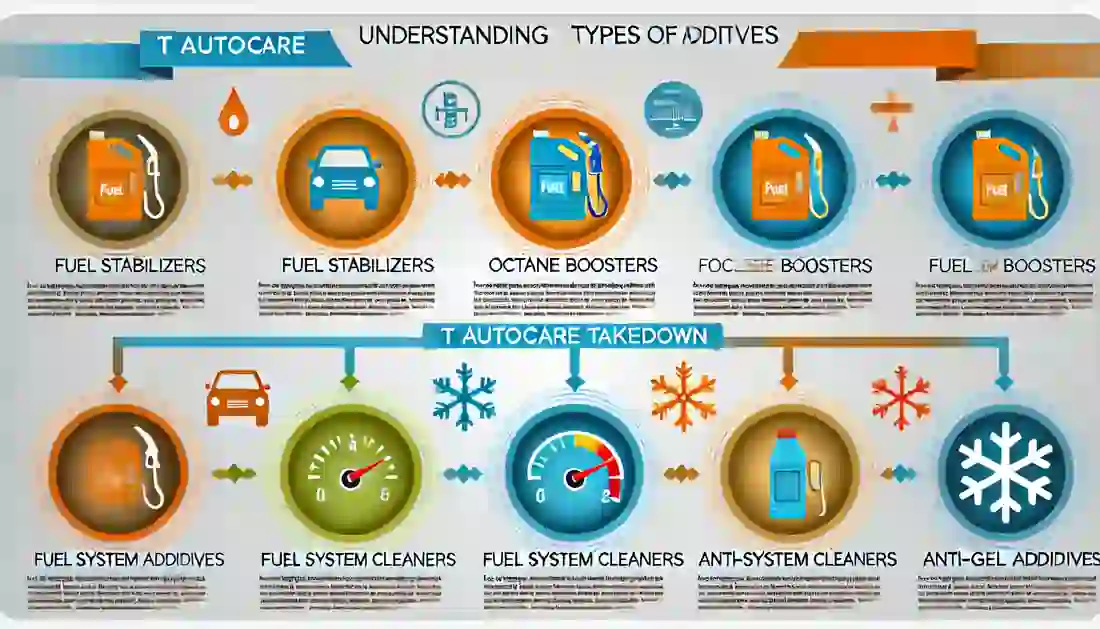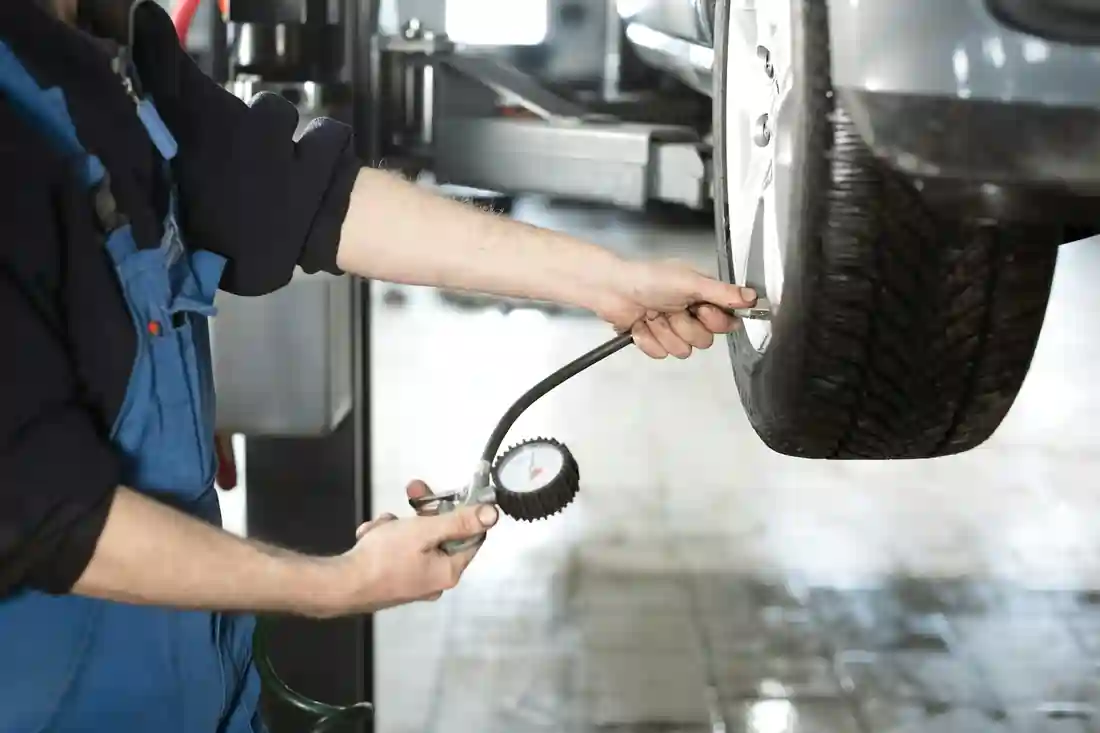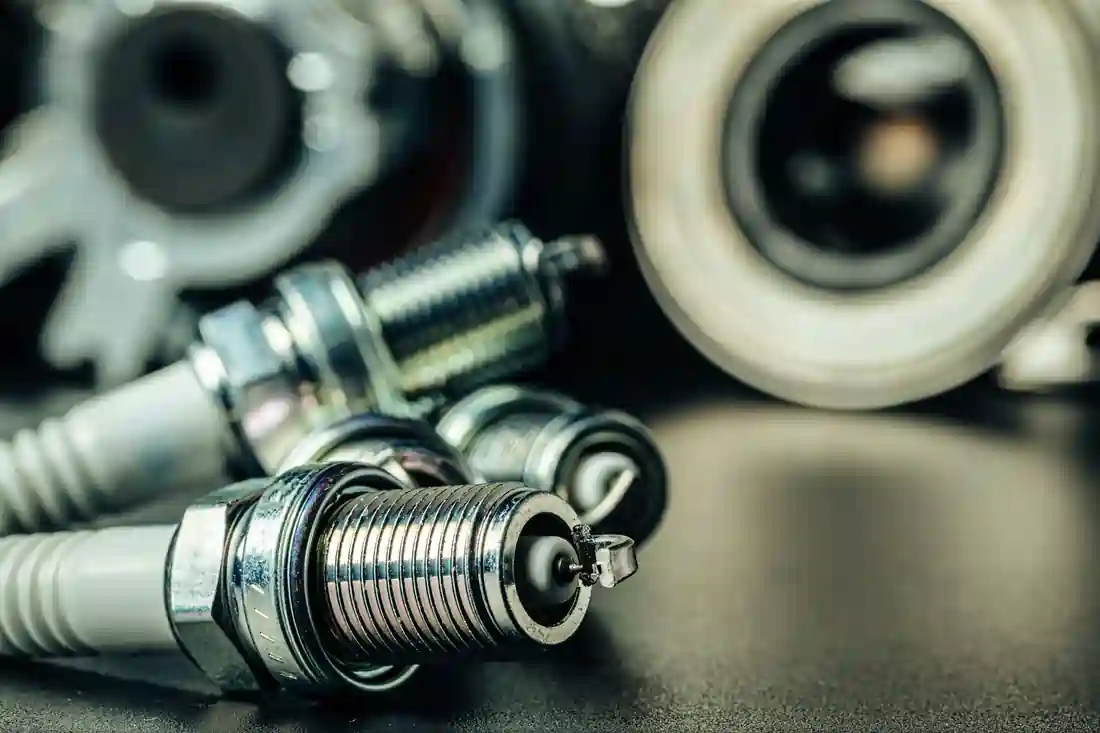As concerns about the environment grow, drivers everywhere are looking for ways to reduce their car’s emissions.
Whether you’re trying to meet new regulations or simply want to make your vehicle more eco-friendly, improving your car’s emissions isn’t as difficult as you might think.
Not only does it help the planet, but it can also save you money in the long run by improving fuel efficiency and extending your car’s lifespan.
This guide covers everything you need to know to get started:
- Why Reducing Emissions is Important
- Steps to Lower Car Emissions

Why Reducing Emissions Is Important
Vehicle emissions are a major source of air pollution.
The gases that cars release—such as carbon dioxide (CO2), nitrogen oxides (NOx), and particulate matter—contribute to global warming and poor air quality. In fact, about 28% of greenhouse gas emissions in the U.S. come from transportation. Reducing your vehicle’s emissions helps protect the environment and ensures your car runs cleaner and more efficiently.
Key benefits of reducing emissions include:
- Lower environmental impact: Reduced pollutants help decrease the effects of climate change.
- Better fuel efficiency: Many emission-reducing practices also improve fuel economy, saving you money.
- Improved vehicle performance: Keeping emissions under control means your car will run more smoothly and last longer.
If you’re curious about emissions testing and regulations, read our post on the benefits of regular emission testing.
Practical Steps to Lower Your Car’s Emissions
Now that we’ve covered why reducing your car’s emissions is crucial for both the environment and your vehicle’s performance, let’s dive into the actionable steps you can take. From regular maintenance to smarter driving habits, there are several practical ways to cut down on harmful emissions. These steps are simple, effective, and can make a big difference in how efficiently your car runs.
1. Regular Maintenance for a Cleaner Engine
Maintaining your vehicle is the first step in reducing emissions. Many emission problems stem from neglect, so by keeping your car in top shape, you can cut down on pollutants.
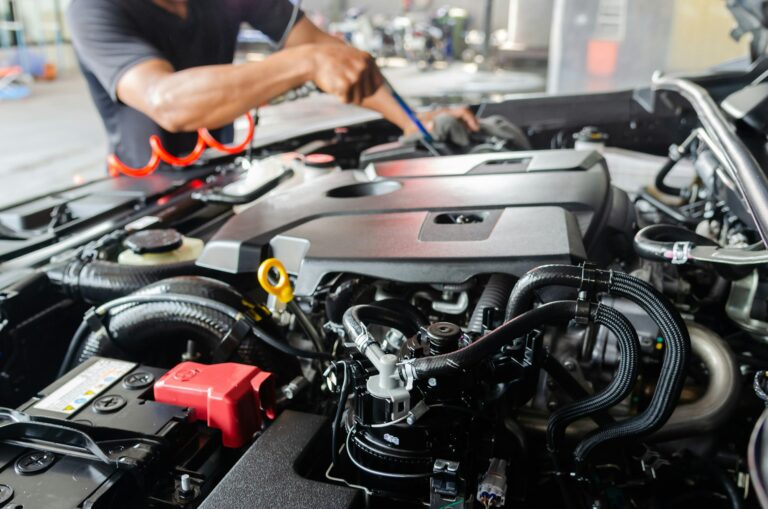
Regular maintenance tasks include:
- Oil changes: Old, dirty oil causes your engine to work harder and emit more pollutants. Check out our guide on the importance of regular oil changes to learn how fresh oil keeps your engine cleaner.
- Engine tune-ups: Misfiring spark plugs and malfunctioning sensors can increase emissions. For more information, explore our comprehensive tune-up guide.
- Air filter replacements: A clogged air filter can reduce engine efficiency, leading to higher emissions. Learn more in our article on when to replace your air filter.
Keeping your engine in peak condition also prevents breakdowns. If you suspect engine trouble, consider our engine diagnostics services.
2. Adopt Smarter Driving Habits
How you drive significantly impacts your vehicle’s emissions. Fast acceleration, sudden braking, and excessive idling cause your engine to work harder and emit more pollutants. By driving more efficiently, you can reduce fuel consumption and lower emissions.
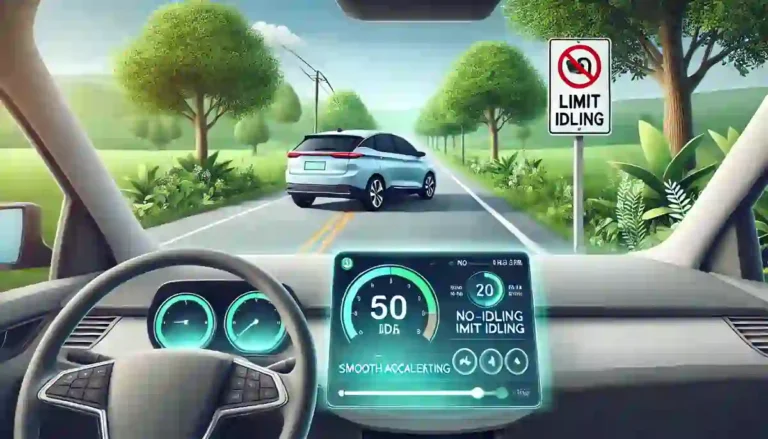
Tips for eco-friendly driving:
- Smooth acceleration and braking: Avoid rapid speed changes, which waste fuel and increase emissions. Instead, accelerate gently and brake smoothly.
- Limit idling: If you’re stopped for more than 30 seconds, it’s better to turn off your engine rather than idle. Prolonged idling burns fuel unnecessarily.
- Use cruise control: On highways, cruise control helps maintain a constant speed, reducing fuel consumption.
For more fuel-saving tips, check out our post on improving fuel efficiency.
3. Keep Your Tires Properly Inflated
Under-inflated tires cause more rolling resistance, which forces your engine to work harder and emit more pollutants. Proper tire maintenance not only reduces emissions but also improves your car’s fuel economy and extends the lifespan of your tires.
How to maintain your tires:
- Check tire pressure regularly: Use a pressure gauge to ensure your tires are inflated to the manufacturer’s recommended level.
- Rotate your tires: Regular rotation helps wear your tires evenly, improving traction and reducing fuel consumption. Learn more about the importance of tire rotation.
- Inspect tire treads: Ensure your tire tread depth is adequate. Worn-out tires reduce fuel efficiency and can lead to safety issues.
For a detailed tire maintenance guide, read our article on how to check and maintain tire pressure.
4. Check and Replace Worn-Out Parts
Worn-out or faulty car components often lead to higher emissions. Regular inspections and timely part replacements can prevent unnecessary pollutants from being released into the air.
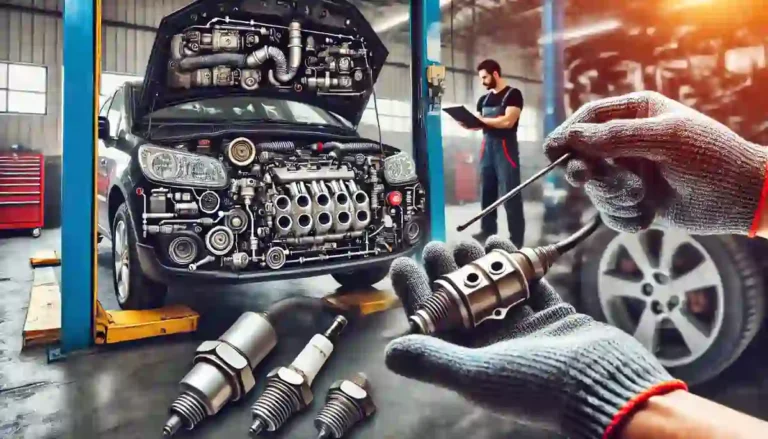
Common parts that affect emissions:
- Oxygen sensors: These sensors monitor your exhaust and adjust the air-fuel mixture for optimal combustion. A malfunctioning sensor increases emissions. Learn more about the role of oxygen sensors in your car.
- Catalytic converters: A failing catalytic converter won’t properly filter out harmful gases. If your vehicle is older, it may be worth considering a replacement. Read our post on the importance of catalytic converters.
- Spark plugs: Misfiring spark plugs lead to incomplete combustion, resulting in higher emissions. For more information on when to replace them, check out our spark plug replacement guide.
If you’re unsure what’s causing your car to emit more pollutants, consider scheduling an engine diagnostic check to pinpoint the problem.
5. Use High-Quality Motor Oil
Choosing the right motor oil can make a significant difference in reducing emissions. High-quality, energy-conserving oils reduce friction and help your engine run more efficiently, which means it burns less fuel and emits fewer pollutants.
Benefits of using synthetic oil:
- Better engine performance: Synthetic oils offer superior protection, especially in extreme temperatures.
- Reduced emissions: Synthetic oil keeps your engine cleaner and reduces harmful deposits.
For more information, check out our guide on the benefits of synthetic motor oil.
6. Avoid Overloading Your Vehicle
Carrying too much weight forces your engine to burn more fuel and produce more emissions. By keeping your vehicle light, you can reduce its environmental impact.
How to reduce vehicle load:
- Remove unnecessary items: Clean out your trunk and avoid carrying heavy loads unless necessary.
- Limit rooftop storage: Roof racks and cargo boxes increase aerodynamic drag, reducing fuel efficiency.
Reducing your vehicle’s weight is one of the easiest ways to improve emissions and fuel economy. Learn more about other small changes in our article on how to maintain your car’s fuel efficiency.
7. Switch to Eco-Friendly Fuel Options
If you’re committed to reducing emissions, consider using alternative fuels like ethanol blends, biodiesel, or compressed natural gas (CNG). These fuels emit fewer pollutants than traditional gasoline.
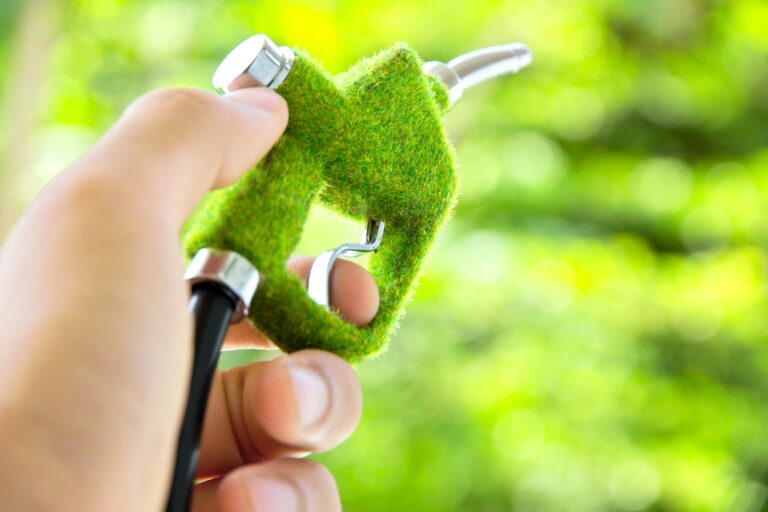
Benefits of alternative fuels:
- Lower CO2 emissions: Many alternative fuels produce fewer greenhouse gases.
- Improved air quality: Some fuels, like CNG, burn cleaner, reducing smog-forming pollutants.
If you’re curious about the environmental benefits of switching to cleaner fuel, check out our post on how fuel affects vehicle emissions.
8. Regularly Inspect Your Exhaust System
Your vehicle’s exhaust system plays a vital role in filtering harmful gases before they exit the vehicle. A leak or malfunction in the exhaust can cause your emissions to skyrocket.
Signs your exhaust needs repair:
- Loud noises: A noisy exhaust might indicate a leak or damaged muffler.
- Check engine light: Exhaust problems can trigger your check engine light, indicating a need for inspection.
For help diagnosing and fixing exhaust issues, visit our exhaust system repair services.
9. Consider Upgrading to a Hybrid or Electric Vehicle
If you’re ready to take a big step in reducing your emissions, consider upgrading to a hybrid or electric vehicle. Hybrids use a combination of fuel and electricity to reduce emissions, while electric vehicles produce zero tailpipe emissions.
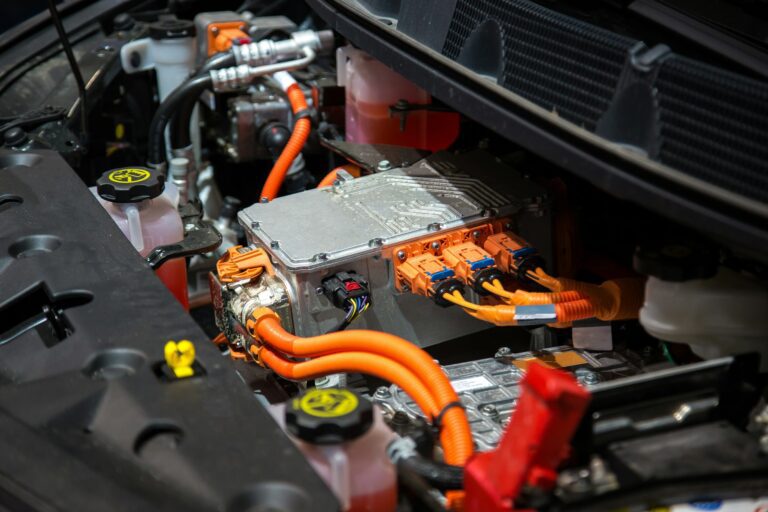
Benefits of hybrids and electric vehicles:
- Lower fuel costs: Hybrids and EVs use significantly less (or no) gasoline, which lowers your fuel expenses.
- Reduced emissions: EVs produce no emissions from tailpipes, and hybrids emit less CO2 than traditional cars.
For more information, check out our article on understanding hybrid and electric vehicle maintenance.
Conclusion
Improving your car’s emissions is essential for both environmental and economic reasons. Regular auto maintenance, adopting fuel-efficient driving habits, investing in technological upgrades, and exploring alternative fuels can make a significant difference. At T Autocare Takedown, we are committed to helping you keep your car running efficiently and cleanly. Contact us today at (539) 367-3738 or visit our auto repair shop at 1501 W Detroit St, Broken Arrow, OK 74012, for all your auto repair and maintenance needs.
By implementing these strategies, you can significantly reduce your car’s emissions, contributing to a cleaner environment and better health for all.

